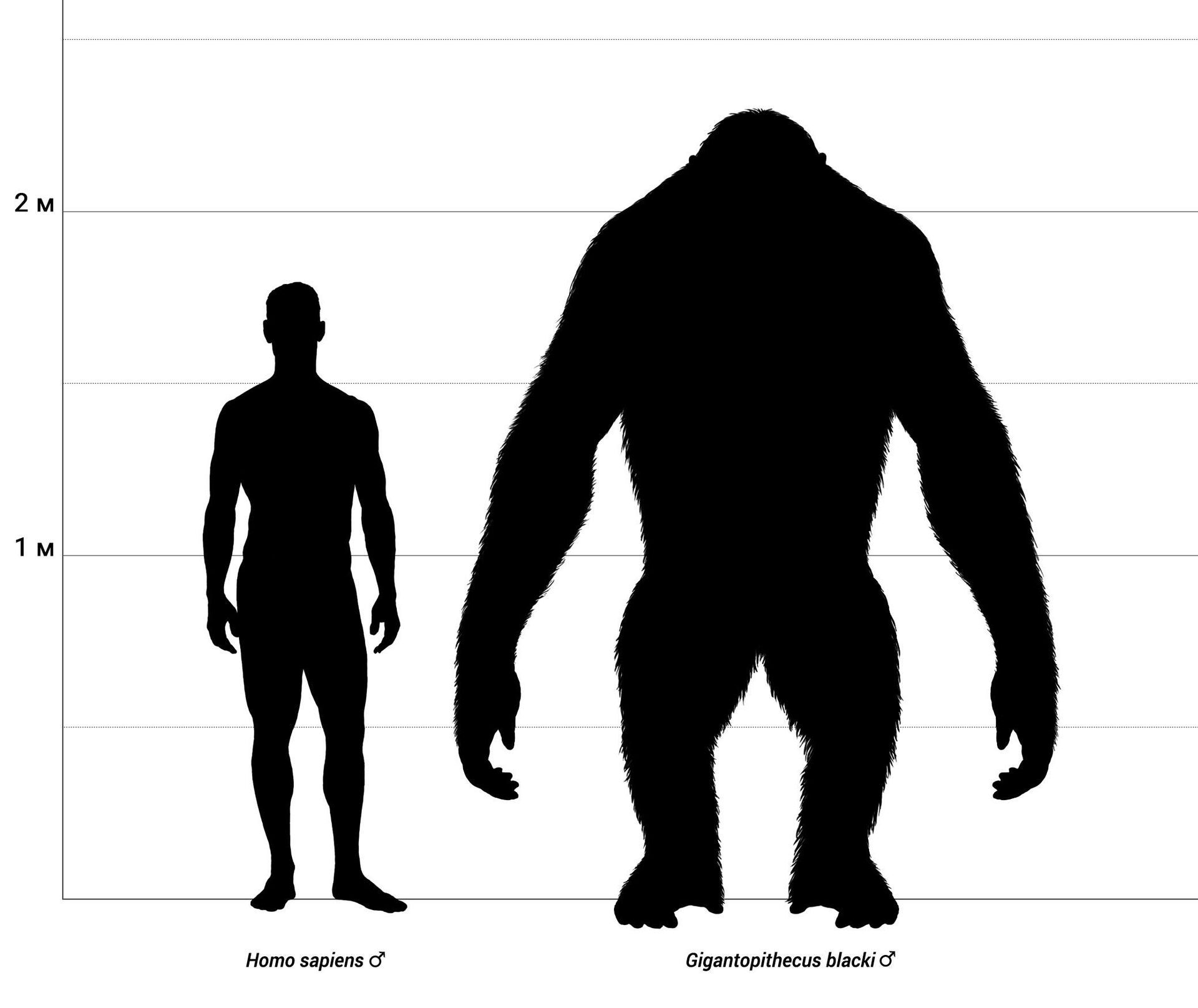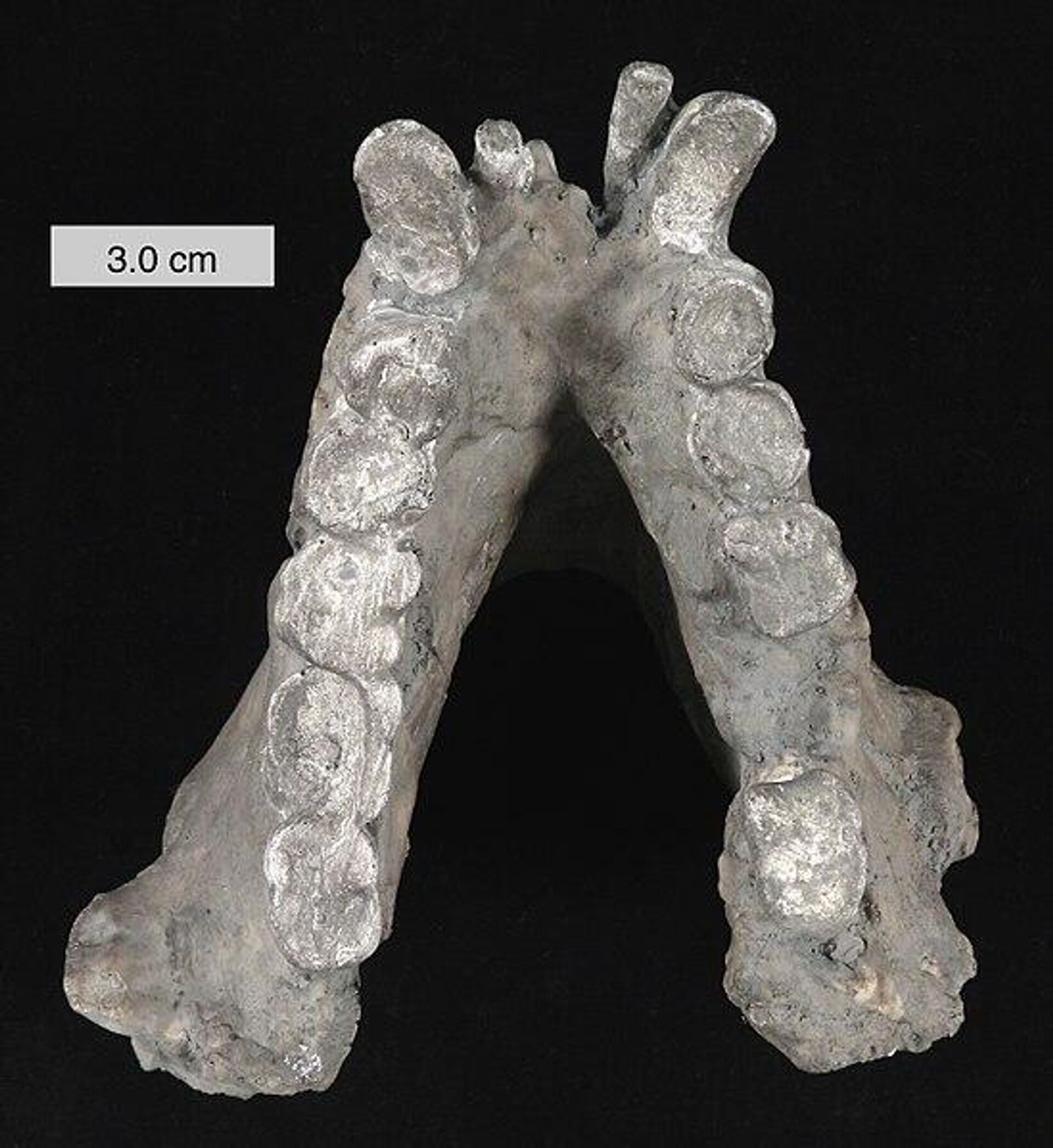
MOSCOW, January 13, Tatyana Pichugina. For a long time, scientists could not solve the mystery of the disappearance of Gigantopithecus, the largest primate of all that inhabited the Earth. Various hypotheses have been put forward, including extermination by humans. Cryptozoologists believed that King Kong was not extinct, but was hiding high in the mountains, far from civilization. What is known about this is in the material .
In search of the Yeti
In 1935, the German paleontologist Gustav von Köngswald bought the so-called dragon tooth at a Chinese pharmacy in Hong Kong. As it turned out, this is a fossilized fragment of a molar measuring two and a half centimeters, belonging to an unknown primate — apparently of colossal stature. The scientist named it Gigantopithecus blacki. And later he acquired several more of these teeth, finding out that they were all probably from the south of China.
Military actions in that region interrupted research for a long time. Only in 1956, paleontologists discovered more teeth and fragments of a jaw in a cave in the Guangxi region.
Due to scanty information, experts for a long time could not establish the exact position of Gigantopithecus on the evolutionary tree. It was considered related to Australopithecus and Pithecanthropus, and it was not ruled out that it was the direct ancestor of man — Gigantoanthropus.
In 1960, English zoologist Vladimir Chernetsky published a short report in the journal Nature analyzing photographs of Bigfoot footprints. The pictures were taken by mountaineer Eric Shipton in the Himalayas. The scientist came to the conclusion that the prints were left by an upright creature. “Bigfoot is a very large, heavy bipedal primate, most likely similar to the fossil Gigantopithecus,” the author pointed out.
A real hunt began for the Yeti, many enthusiasts tried to find him. American anthropologist Grover Kranz maintained until the end of his life that bigfoot (another name for Bigfoot) is a surviving representative of Gigantopithecus, which managed to move from Southeast Asia to North America through the Bering Strait.
Now science denies the existence of bigfoot — no reliable evidence has been found. As for Gigantopithecus, its fate began to become clear only recently thanks to new finds, methods of molecular diagnostics and dating.
Relative found
Fossil remains of Gigantopithecus are found in karst caves in the southern regions of China, less commonly in Thailand and northern Vietnam. Controversial finds on the island of Java are tentatively attributed to this primate species. Now more than two thousand teeth and four jaw fragments have been collected. There are no other parts of the skeleton, making taxonomy difficult.
Gigantopithecus reached three meters and weighed twice as much as gorillas — 200-300 kilograms. That is, these are the largest primates that have ever lived on Earth. Their record begins in sediments two million years old and breaks off about three hundred thousand years ago. From whom they originated and who their closest relatives were remained unknown for a long time. It is not possible to isolate genetic material from samples. Therefore, scientists from Denmark and other European countries, led by Enrico Capellini, used paleoproteomic analysis of tooth enamel.
A proteome is a set of proteins in a tissue, which makes it possible to partially restore the genome if it is impossible to obtain whole DNA. Scientists have isolated material from a 1.9-million-year-old Gigantopithecus tooth found in Chuifan Cave in China. This is the oldest proteome of a Cenozoic vertebrate at that time. The sample contained 409 peptides that comprise six proteins.
< br />
It turned out that the tooth from which the peptides were isolated belonged to a female Gigantopithecus. And a comparison with the deciphered genomes of living hominids showed that it is closest to modern orangutans. Both genera separated from a single ancestor about ten to twelve million years ago.
Scientists were surprised by the presence in the sample of the AHSG protein — fetuin A, which in humans is responsible for the mineralization of teeth and bone growth. Its concentration is higher in the blood of the fetus than in adults. Modern hominids do not have it in their tooth enamel. This protein probably served to strengthen the enamel of Gigantopithecus, which is much thicker than that of modern primates.
Why did the giants disappear
Gigantopithecus lived simultaneously with different species of Homo, and in the subtropics they could intersect with Homo erectus and his descendants. Remains are sometimes found in the same layers, but whether there was any interaction between the primates is unclear. Often huge monkeys climbed into very inaccessible caves in the mountains.
They ate mainly plant foods, including grains, nuts, and fruits. The diet was plentiful, as evidenced by the enlargement of teeth, changes in their structure and thickening of the enamel. The ecosystem could support several communities of Gigantopithecus, occupying different caves. However, over time, something happened, after which their numbers fell sharply. The huge primates remained only in Guangxi and became extinct before the ancestors of modern humans arrived in those parts.
Scientists from Australia, South Africa and China found out what caused the disappearance and exactly when it happened. In an article recently published in Nature, the authors note that there is very little dating associated with these primates, and almost all were carried out using the same method, and by modern standards this is not enough. The analysis took data from 22 caves and used six methods to date sediments and fossils. We studied pollen, coal, stable isotopes, and used paleontological and stratigraphic analyzes to reconstruct the environment. In addition, the dental remains were re-examined, including traceology and isotopic composition, to establish changes in the diet and behavior of Gigantopithecus. The results were compared with a contemporary species of orangutan, the also extinct Pongo weidenreichi.
According to the data obtained, Gigantopithecus appeared 2.3 million years ago. Between 1.8 and 1.2 million years ago, their species flourished along with other primates. About 700 thousand years ago their numbers began to decline. And between 295-215 thousand years ago they disappear.
Scientists believe that Gigantopithecus, which formed in the stable conditions of humid forests, where there was plenty of food and water, was too committed to its type of nutrition. As conditions changed, many types of food became seasonal, especially fruits. Other primates switched to less nutritious, higher-fiber foods. Gigantopithecus also tried, but it did not save them.
Low mobility also played a role. Huge monkeys lived mainly in mountain forests, from time to time descending into valleys to the water, while their relatives could climb trees, collect water in leaves and cover long distances. Over time, hard-to-reach forest areas shrank and became more open to other species, creating competition for food. Due to their large size, Gigantopithecus required more food. Being malnourished, they reproduced less. Long-term stress affected the structure of the teeth.
Scientists have not found any evidence of ancient Homo hunting Gigantopithecus, as was the case in Africa and Australia, where people contributed to the extinction of megafauna. It appears that habitat changes did play a key role. Just at this time, the southern regions of Southeast Asia began to be explored by our ancestors, for whom the diversity of landscapes and climatic conditions did not pose such a big problem.


























































Свежие комментарии